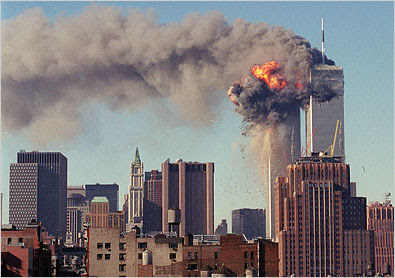- 2001 - The 9/11 attack on World Trade Centre, USA
- 2003 - SARS Outbreak in China
- 2004- Indian Ocean Tsunami
- 2008- Mumbai terrorist attack
- 2011- Japanese Tsunami and Nuclear crisis
 |
| 2001 - The 9/11 attack on World Trade Centre, USA |
 |
| SARS Outbreak in China |
In other hand it’s very important to note that there are also some examples where media directly supported the destinations effected by disasters to bounce back. In 2002 Bali bomb blast was a very deliberate attack on tourism. Incident took place on 12 October 2002 in the tourist district of Kuta on the Island of Indonesia. It was resulted death of 202 people (including 88-Australian tourists, 38 Indonesian citizens). Impact was immediately effected the place where more than 25% regional GDP, solely depends on the tourism sector(World Bank ,2010).
 |
| 2002 Bali bomb blast |
However public media in Indonesia stepped in to the situation and started media collaboration with Indonesian government. Media helped to publicize a series of steps to taken by the government of Indonesia and how the investigations went tough to capture the responsible parties for the bombings and how authorities met the effected families and victims of the incident and shared their losses. World was reminded that people of Bali are gentle and very religious and this image recreation played a key role in the recovery of Bali’s Image and rebuild the image of tourist destination. The government stimulated domestic tourism. Media showed the world that hotels, beaches, shopping areas and other tourism attractions have returned to the normalcy. These efforts helped rebuild tourism in Bali (Baral et al.,2004).
 |
| Bali City |
The adverse effects of negative media reports by the western media can be devastatingly effect on countries like Sri Lanka a lot. Sri Lankan tourism depends largely on destination Image. The negative reports can make the destination image damaged, and this damage will take significant amount of time to recover. The mass media has a very clear role to play as a vital source of information and this information can be very vital for the tourists to gain an image about the country. (Nielsen, 2001).
However there are some commend practice in the media around the world to exaggerate any news. So the news can be a hot spot stories. But at the same time these kinds of hotspot stories can have very serious adverse impact on countries tourism sector (Smyth,1992).
Operators in tourist generating countries led to a drastic deterioration in the destination image of Sri Lanka (Upadhayaya, 2009). It is submitted that the highly negative UK media reports, especially those from the private television channels, which contributed to a sharp decline of tourist arrivals from UK to Sri Lanka. In conflict time period travel advisories issued by foreign embassies and diplomatic missions in Sri Lanka and abroad, and removal of Sri Lanka from promotional brochures by tour operations during the war toned time period(Upadhayaya, 2009).
 |
| Sri Lankan Killing fields negative media coverage of Channel4 Media |
Even after the conflict situation, negative mass media reports contributed to the erosion of a positive destination image during the conflict years. Although there were some shocking incidents not relating to the insecurity of and crimes against tourists, many journalists were quick to exaggerate the negative situation, and many western media were in the forefront in fabricating news with sensationalized headlines such as ‘’Sri Lankan Killing fields ‘’ portraying post war in Sri Lanka as it is unsafe for tourists or other ethnic groups. The negative media coverage (International Business Times,2011) even government of Sri Lanka state that the operation was strictly humanitarian based and it resulted immediate freedom to many innocent citizens who trapped under the terrorist iron fist( MOD,2011)
Sri Lanka Humanitarian Mission
What really happened in the final stages of the battle with out media exaggerations
However according to government of Sri Lanka operational context of the Humanitarian Operation undertaken by the Government of Sri Lanka between July 2006 and May 2009 to free the country from the Liberation Tigers of Tamil Eelam (LTTE). An examination of these facts demonstrates why the Government of Sri Lanka engaged in a military strategy against the LTTE, why Security Forces used the level of force they did, and how at each stage in the operation Sri Lanka took extraordinarysteps to respect and protect the lives of civilians( MOD,2010)
 |
Footage taken from a military spy aircraft showing LTTE keeping civilians as a human Shield (SRI LANKAN AIR FORCE,2009) |
 |
| satellite images showing area in northern Sri Lanka where civilians kept as a human Shield |
"It is 60,000 plus and counting, and we have heard various reports of up to 110,000 coming out,” said the U.N. spokesman in Colombo, Gordon Weiss. He cautioned the reports were preliminary and not confirmed.
The LTTE has accused the military of fabricating the numbers and of capturing people it says are staying by choice. It has ignored all calls to free civilians while urging a truce, and on Tuesday vowed no surrender despite facing overwhelming firepower."
(Weiss,2009)
No comments:
Post a Comment